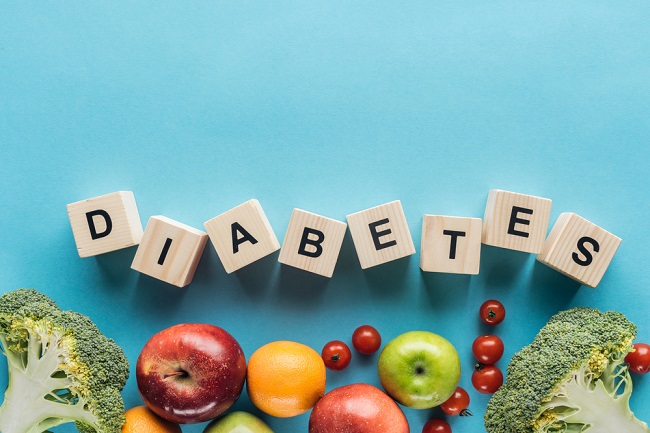
How to Handle Diabetes Without Giving Up Your Favorite Foods: A Practical Guide
The diagnosis of diabetes can feel like a life-altering event. It often brings with it the fear of dietary restrictions and the perceived loss of favorite foods. However, managing diabetes doesn’t necessitate a complete abandonment of culinary pleasures. It’s about making informed choices, understanding portion control, and adopting a balanced approach. This article provides a comprehensive guide on how to handle diabetes without giving up your favorite foods. It offers practical strategies and insights to help you navigate this journey successfully.
The core principle revolves around mindful eating and smart substitutions. Instead of eliminating entire food groups, the focus shifts to modifying recipes, adjusting portion sizes, and understanding the impact of different foods on blood sugar levels. This approach empowers individuals with diabetes to enjoy a fulfilling life while maintaining optimal health.
Understanding Diabetes and Its Nutritional Needs
Diabetes, in its various forms (Type 1, Type 2, and gestational), affects how the body processes glucose, the primary source of energy. This disruption impacts the body’s ability to regulate blood sugar levels. Effective management of diabetes necessitates a deep understanding of how food choices influence these levels. A well-structured meal plan is crucial.
For individuals with diabetes, the goal is to maintain blood sugar levels within a healthy range. This is achieved through a combination of medication, exercise, and, most importantly, dietary management. This involves paying close attention to the types of carbohydrates consumed, the overall calorie intake, and the timing of meals. Working with a registered dietitian or a certified diabetes educator is highly recommended.
Crafting a Diabetes-Friendly Meal Plan
Creating a meal plan that aligns with your preferences and health goals is essential. This plan should consider factors like your current blood sugar levels, medications, activity levels, and food preferences. A structured meal plan helps you stay consistent with your dietary choices.
Carbohydrate Counting: A Cornerstone
Carbohydrate counting is a fundamental skill in diabetes management. It involves tracking the amount of carbohydrates consumed in each meal and snack. Carbohydrates have the most significant impact on blood sugar levels. Knowing how many carbs are in a serving of food is crucial for managing blood sugar. This helps in adjusting insulin dosages (if applicable) and planning meals.
Focus on Fiber-Rich Foods
Fiber plays a vital role in regulating blood sugar. It slows down the absorption of glucose, preventing rapid spikes. Incorporate plenty of fiber-rich foods like whole grains, fruits, vegetables, and legumes into your diet. These foods also provide essential nutrients and contribute to overall health. This approach helps in how to handle diabetes without giving up your favorite foods by making smart substitutions.
Healthy Fats and Protein
Healthy fats and protein are also important components of a balanced diet for people with diabetes. Healthy fats, such as those found in avocados, nuts, and olive oil, help to promote heart health. Protein aids in satiety and helps to manage blood sugar levels. It is also essential for building and repairing tissues. Choose lean protein sources like fish, poultry, beans, and tofu.
Making Smart Food Choices and Substitutions
The key to enjoying your favorite foods while managing diabetes lies in making smart choices and substitutions. This involves understanding the nutritional content of different foods and modifying recipes to make them diabetes-friendly. It’s about enjoying life while managing your health.
Swapping Ingredients: Clever Replacements
Many traditional recipes can be adapted to be diabetes-friendly. For example, replace white flour with whole wheat flour or almond flour. Substitute sugar with natural sweeteners like stevia or erythritol. Opt for low-fat dairy products over full-fat versions. These swaps can significantly reduce the impact on blood sugar.
Portion Control: The Art of Moderation
Portion control is paramount. Even healthy foods can lead to blood sugar spikes if consumed in excess. Use smaller plates, measure food portions, and pay attention to serving sizes listed on food labels. Moderation is key when considering how to handle diabetes without giving up your favorite foods.
Healthy Cooking Methods
Choose cooking methods that minimize added fats and sugars. Opt for grilling, baking, steaming, or stir-frying instead of deep-frying. Use herbs, spices, and lemon juice to add flavor instead of relying on salt and sugar. These methods help maintain a healthy lifestyle.
Favorite Foods: How to Enjoy Them Responsibly
The good news is you don’t have to completely eliminate your favorite foods. The goal is to enjoy them in moderation while keeping your blood sugar levels stable. This requires planning, mindful eating, and some clever strategies.
Pizza: The Ultimate Test
Pizza is a popular comfort food. To make it diabetes-friendly, choose whole-wheat crust, load up on vegetables, and use a moderate amount of low-fat cheese. Control portion sizes and monitor your blood sugar levels after eating. Consider making your own pizza at home to better control the ingredients.
Pasta: A Carbohydrate Conundrum
Pasta can be part of a diabetes-friendly diet. Choose whole-wheat pasta over refined pasta. Combine it with a generous portion of vegetables and lean protein. Control portion sizes and be mindful of the sauce. Alfredo sauce is a bad choice. Opt for tomato-based sauces.
Desserts: Sweet Treats with a Twist
You can still enjoy desserts. Opt for sugar-free options or recipes that use natural sweeteners. Choose smaller portions and pair them with protein or healthy fats to slow down glucose absorption. Consider fruits as a naturally sweet dessert option. Enjoying your favorite foods is possible when you know how to handle diabetes without giving up your favorite foods.
Snacks: Smart Choices Between Meals
Snacks are an important part of diabetes management. Choose snacks that are high in fiber, protein, and healthy fats. Examples include nuts, seeds, yogurt, or a small piece of fruit with a handful of almonds. These snacks help to keep blood sugar levels stable between meals.
Lifestyle Factors: Beyond Diet
While diet is crucial, other lifestyle factors play a significant role in diabetes management. These factors work together to improve your overall health.
Regular Exercise: A Powerful Ally
Regular physical activity is a powerful tool in managing diabetes. Exercise helps to improve insulin sensitivity, which means your body can use insulin more effectively. Aim for at least 150 minutes of moderate-intensity exercise per week. Include both cardiovascular exercise and strength training. Exercise helps you in how to handle diabetes without giving up your favorite foods.
Stress Management: A Holistic Approach
Stress can negatively impact blood sugar levels. Find healthy ways to manage stress, such as meditation, yoga, or spending time in nature. Prioritize getting enough sleep and practicing relaxation techniques. These approaches can significantly improve your health.
Regular Monitoring: The Key to Control
Regular blood sugar monitoring is essential for effective diabetes management. Use a blood glucose meter to check your blood sugar levels at various times throughout the day. Keep a log of your readings and share it with your healthcare team. This helps you to track your progress and make necessary adjustments to your diet and medication.
Working with Healthcare Professionals
Managing diabetes is a team effort. Working closely with healthcare professionals is crucial for developing a personalized management plan.
Consulting a Registered Dietitian
A registered dietitian can provide personalized dietary guidance and help you create a meal plan that aligns with your individual needs and preferences. They can also teach you how to count carbohydrates and make smart food choices. This is a key part of how to handle diabetes without giving up your favorite foods.
Seeking Guidance from a Certified Diabetes Educator
A certified diabetes educator can provide education and support on all aspects of diabetes management, including medication, exercise, and self-monitoring. They can also help you develop problem-solving skills and cope with the emotional challenges of diabetes. They are a great resource.
Regular Check-ups with Your Doctor
Regular check-ups with your doctor are essential for monitoring your overall health and making sure your diabetes management plan is effective. Your doctor can also screen for any potential complications and provide guidance on preventive measures. This is key to a healthy lifestyle.
Conclusion: Living Well with Diabetes
Managing diabetes is an ongoing process. It requires dedication, education, and a willingness to make changes. However, it doesn’t mean giving up your favorite foods. By adopting a balanced approach, making smart choices, and working closely with your healthcare team, you can live a fulfilling and healthy life. You can successfully handle diabetes without giving up your favorite foods. This approach helps you enjoy life to the fullest.
Remember, the key is to find a sustainable approach that fits your lifestyle. It’s about making informed decisions and enjoying the journey. Embrace the changes and celebrate your successes. Focus on what you can eat, not what you can’t. This approach will help you maintain your health.
[See also: Related Article Titles]

